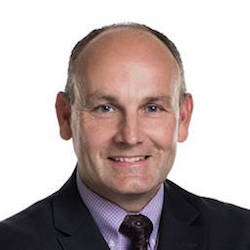The halcyon days of assisted living communities resembling comfy hotels and providing little more than social and residential programs for well-off residents is fading fast. Operators that hope to compete for customers down the road need to change their business models and, in particular, ramp up offerings for more healthcare services.
A pair of demographic forces are sparking this new thinking: tens of millions of baby boomers are expected to move into assisted living communities starting in the mid-2020s. Tomorrow’s residents aren’t going to be like yesterday’s residents:
- They likely are going to be older than today’s average admission age of 85.
- They’re going to need a greater level of medical care.
- They’re going to have higher standards and be looking for facilities that meet their lifestyle expectations.
- And they’re going to be paying for care not out of pocket, but increasingly via insurance or Medicare.
It may not look like it now, with vacancies today somewhat high across the industry — the occupancy rate was 85.2% in the second quarter of 2018 — but the bubble is coming. The time for the industry to adapt is now, not five years from now when more services and facilities are needed.
New business models
The good news is that the short-to-intermediate term struggle to fill rooms may turn into an impetus for some communities to move away from their almost exclusive reliance on private-pay residents.
Communities that add medical services likely not only will have a larger universe of potential residents and new revenue streams; they also will be able to move principally from simple private-pay billing systems to more complicated reimbursements from insurers and government programs such as Medicare.
This transition has been a long time coming.
Many people already believe that skilled nursing facilities look like hospitals, assisted living communities look like SNFs (but with pleasant lobbies and rooms with doors that close) and independent living communities look like the more recent assisted living centers, with residents in walkers and wheelchairs. Assisted living is poised to take on a more dramatic shift in the care continuum by diversifying its payer stream and navigating the impending regulatory environment to take on a larger role of population health management.
Assisted living operators have begun working with healthcare providers in recent years, but we now have reached the tipping point in these partnerships. Indeed, learning to navigate healthcare systems and increasing levels of medical care coordination will be vital to maintaining and increasing revenue in this new era. The ability to do so very well may be the difference between communities staying in the assisted living business long-term or not — especially with new players, such as managed care operators, also looking to enter the field.
Particular providers should ask themselves tough questions:
- Is it smart to remain a light custodial caregiver, offering activities and limited healthcare services to mostly affluent, private-pay customers?
- Is that what residents will want in 10 years?
- Will those communities have to grow in size, merge or enter into partnerships?
- Will the average length of stay — currently 21 months — change?
Frankly, not every provider today will be able or willing to take on this new role. I’m sure that if occupancy rates were 100% and private payment a non-issue, many would not sign up.
Fortunately, for those operators that want to and can switch, there is still time to act. The industry is just now starting to think about how best to change to a coordinated care model, meaning operators can get out in front of this need.
With the baby boomer wave coming, the imperative for change is evident. The question is how big a shift the industry can make and how fast before new players come in to take over the marketplace.
Patrick McCormick, CPA, is a partner in Plante Moran’s senior care and living practice. He is based in the company’s Cleveland office.



